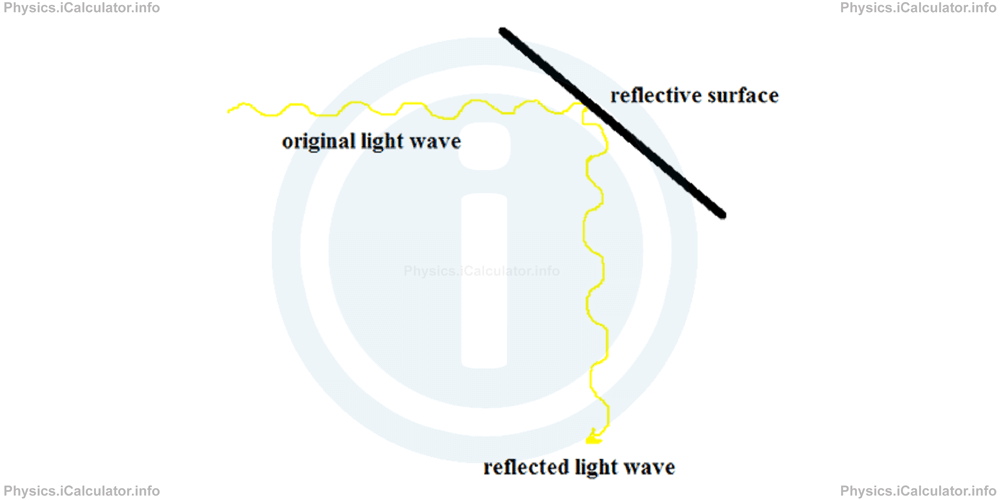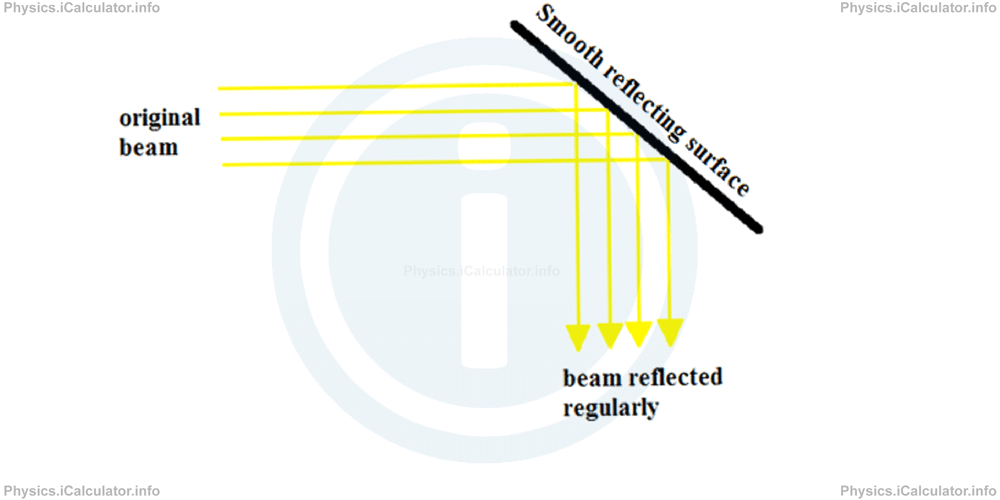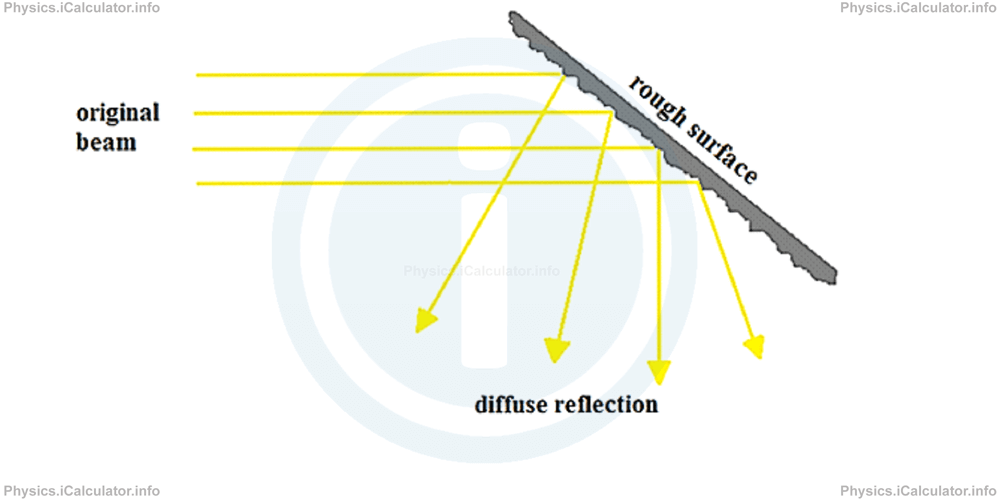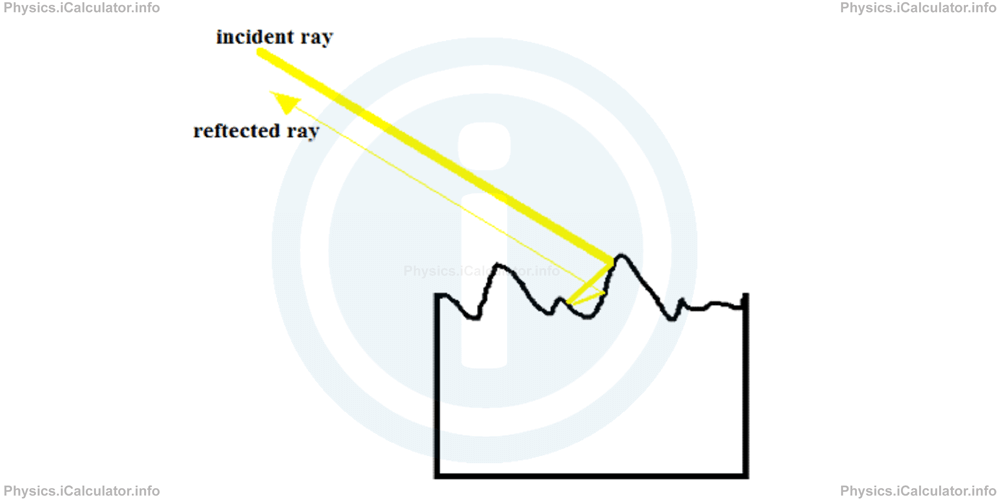Menu
Physics Lesson 12.2.2 - Reflection of Light. Types of Reflection
Please provide a rating, it takes seconds and helps us to keep this resource free for all to use
Welcome to our Physics lesson on Reflection of Light. Types of Reflection, this is the second lesson of our suite of physics lessons covering the topic of Reflection of Light, you can find links to the other lessons within this tutorial and access additional physics learning resources below this lesson.
Reflection of Light. Types of Reflection
Being a wave (EM wave), light also reflects when it encounters a large obstacle. During this process, the light bounces off the obstacle and changes its original direction.

Things to consider when dealing with reflection of light:
- If the reflective surface is ideal, light wave does not loose energy. As a result, the reflected wave will have the same features as the original wave (frequency, wavelength, amplitude, speed etc.) except direction.
- The best reflective surfaces are those surfaces that are 100% flat and smooth. This is very difficult to achieve as all surfaces have a number of holes, which distort their smoothness. However, flat surfaces made of glass are very close to be smooth. Therefore, we often consider glass mirrors when discussing about reflection of light.
There are two kinds of reflection based on the properties of reflecting surfaces:
a) Regular reflection
In regular reflection, the reflected light beam has the same shape as the original one. Regular reflection occurs when the reflecting surface is very smooth as shown in the figure below.

b) Diffuse reflection
In this type of reflection, rays forming a regular beam fall on a non-regular (rough) surface. As a result, rays are reflected in different angles (they diffuse) as shown in the figure below.

Diffuse reflection is the reason why we see objects around us despite that they may not be exposed to direct sunlight. Indeed, most of rays coming from the Sun are absorbed by objects on which the sunlight falls. As a result, these objects become hot. Only the rays composed by light waves which have the frequency corresponding to the colours of objects are reflected by objects' surface to our eyes. As a result, we are able to see both the shape and colours of objects illuminated by the sunlight.
But why rough (matt) surfaces are bad reflectors of light? This occurs because a light ray makes a number of collisions on objects surface before moving away from it. As a result, the light loses energy every time it collides, making the reflection more difficult as shown in the figure below in which light energy is indicated by the ray thickness.

You have reached the end of Physics lesson 12.2.2 Reflection of Light. Types of Reflection. There are 4 lessons in this physics tutorial covering Reflection of Light, you can access all the lessons from this tutorial below.
More Reflection of Light Lessons and Learning Resources
Whats next?
Enjoy the "Reflection of Light. Types of Reflection" physics lesson? People who liked the "Reflection of Light lesson found the following resources useful:
- Categories Feedback. Helps other - Leave a rating for this categories (see below)
- Optics Physics tutorial: Reflection of Light. Read the Reflection of Light physics tutorial and build your physics knowledge of Optics
- Optics Revision Notes: Reflection of Light. Print the notes so you can revise the key points covered in the physics tutorial for Reflection of Light
- Optics Practice Questions: Reflection of Light. Test and improve your knowledge of Reflection of Light with example questins and answers
- Check your calculations for Optics questions with our excellent Optics calculators which contain full equations and calculations clearly displayed line by line. See the Optics Calculators by iCalculator™ below.
- Continuing learning optics - read our next physics tutorial: Refraction of Light
Help others Learning Physics just like you
Please provide a rating, it takes seconds and helps us to keep this resource free for all to use
We hope you found this Physics lesson "Reflection of Light" useful. If you did it would be great if you could spare the time to rate this physics lesson (simply click on the number of stars that match your assessment of this physics learning aide) and/or share on social media, this helps us identify popular tutorials and calculators and expand our free learning resources to support our users around the world have free access to expand their knowledge of physics and other disciplines.